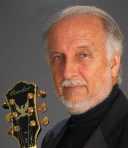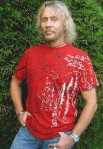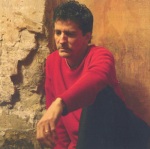vinicius cantuaria
Vinicius Cantuaria – Rio
Cantuaria and band live at Tonic, NYC.
“The doyen of Brazilian singer-songwriters – more melodic than Caetano Veloso, more consistent than Gilberto Gil and with more talent than Max de Castro, Otto and Patricia Marx put together” The Guardian
“A gentle subversive” Metro
50 Years of Bossa Nova – performers
JOÃO DONATO
 As an iconic musician and arranger in the bossa nova movement, João Donato is profoundly influential, having inspired generations of musicians. João Gilberto has confessed to have taken his bossa nova beat at the violão from Donato’s piano playing.
As an iconic musician and arranger in the bossa nova movement, João Donato is profoundly influential, having inspired generations of musicians. João Gilberto has confessed to have taken his bossa nova beat at the violão from Donato’s piano playing.
Donato’s solo albums alone number 29 and the indefatigable 74 year-old has never stopped performing or recording. He started his recording career at 15 in association with the great master Altamiro Carrilho and went on to record with Tom Jobim, Johnny Alf, João Gilberto and Luiz Bonfá as well as others outside of Brazil such as Airto Moreira, Randy Brecker, Ray Barretto, Mongo Santamaria and Tito Puente. He usually composes the music and leaves lyrics for others such as Caetano Veloso on A Rã, Gilberto Gil on A Paz, Bananeira and Lugar Comum, and João Gilberto on Minha Saudade.
His compositions such as Amazonas, A Rã and Bananeira have been recorded by many generations of bossa, jazz and even hip-hop artists, and he has arranged pieces for many more.
ROBERTO MENESCAL
 The composer of bossa nova classics like O Barquinho, Ah, Se Eu Pudesse, Errinho à Tôa, Nós e o Mar, Rio, Você, and Vagamente, Roberto Menescal started his professional career in 1957 as Sylvia Telles’ sideman on guitar in a tour around Brazil.
The composer of bossa nova classics like O Barquinho, Ah, Se Eu Pudesse, Errinho à Tôa, Nós e o Mar, Rio, Você, and Vagamente, Roberto Menescal started his professional career in 1957 as Sylvia Telles’ sideman on guitar in a tour around Brazil.
In 1958, he opened a guitar school in Copacabana (Rio) with Carlos Lyra, and his students included bossa muse Nara Leão. In the same year, he formed the Conjunto Roberto Menescal, one of the first instrumental groups of bossa nova. The group accompanied Dorival Caymmi, Vinícius de Moraes, Billy Blanco, Maysa, and Telles. Also in 1958, he participated, with Telles, Carlos Lyra, and other artists, in a show at the Clube Hebraica (Rio), when the words “bossa nova” were used (inadvertently, by the club’s secretary) for the first time to advertise the event. Having taken part with his group in the recording of Garotos da Bossa Nova in 1959, he participated in the I Festival de Samba Session at the Teatro de Arena theater of the School of Architecture at the State University of Rio de Janeiro. Such informal venues were important vehicles for bossa nova among the middle-class university students who were more inclined to absorb and disseminate it, and Menescal was instrumental for the promotion of such concerts in 1959, 1960 and 1961. His O Barquinho (with Ronaldo Bôscoli) became a bossa nova anthem.
In November 1962, he participated in the historic Bossa Nova Festival at Carnegie Hall in New York, NY, with Tom Jobim, Carlos Lyra, and others, interpreting O Barquinho in one of his few performances as a singer. In 1968, he accompanied Elis Regina on her European tour and remained her sideman until 1970, when he became the record label Polygram’s A&R. Already established as a major producer (having worked with Caetano Veloso, Gilberto Gil, Jorge Ben Jor, Gal Costa, Maria Bethânia, and many others), he had several compositions of his included in soundtracks of popular TV soap operas and films. In the mid-80s he re-dedicated himself to his solo career and has participated in jazz projects, among others with Joe Henderson. Menescal also owns the label Albatroz.
In 2002, Menescal’s songs had a fresh lease of life when the new bossa group Bossacucanova, which his son Marcio belongs to, revitalized them for the current generation of bossa lovers in their album Brasilidade, nominated for a Latin Grammy.
WANDA SÁ
 The bossa nova fan traded São Paulo for Rio de Janeiro and at age 13, was having guitar lessons with Roberto Menescal. At age 19, she made her debut with the album Wanda Vagamente (1964), one of the earliest arranging assignments by Eumir Deodato, and featuring Inútil Paisagem (Tom Jobim and Aloysio de Oliveira) as well as the earliest compositions by Edu Lobo and Marcos Valle (Samba de Verao or So-Summer Samba). The album, launched at the Fino da Bossa show at the Paramount Theater in São Paulo was a success and she had a hit with Vagamente (Roberto Menescal/Ronaldo Bôscoli).
The bossa nova fan traded São Paulo for Rio de Janeiro and at age 13, was having guitar lessons with Roberto Menescal. At age 19, she made her debut with the album Wanda Vagamente (1964), one of the earliest arranging assignments by Eumir Deodato, and featuring Inútil Paisagem (Tom Jobim and Aloysio de Oliveira) as well as the earliest compositions by Edu Lobo and Marcos Valle (Samba de Verao or So-Summer Samba). The album, launched at the Fino da Bossa show at the Paramount Theater in São Paulo was a success and she had a hit with Vagamente (Roberto Menescal/Ronaldo Bôscoli).
She then joined Sérgio Mendes’ group Brasil 65, along with Jorge Ben, playing the college circuit in the USA. She was singing in a nightclub and was spotted by Dave Cavanaugh, Nat King Cole’s and Frank Sinatra’s agent. Wanda made three albums in the U.S: two with Brasil 65 and the solo Softly. Back in Brazil, she performed with Baden Powell, Vinicius de Moraes and Bossa Tres. Wanda was married to Edu Lobo for 12 years, choosing to take care of her kids and giving guitar lessons. In the late 1980s, she met again with her old teacher, Menescal, and made a comeback. In addition to shows with Menescal and Miéle, she recorded the album Brasileiras with Celia Vaz in 1994. In 2000, she recorded with Luís Carlos Vinhas, Tião Neto, and João Cortez the CD Wanda Sá & Bossa Três with bossa nova classics and new compositions.
MARCOS VALLE
 A singer and composer from the so-called “second wave” of bossa nova musicians, Valle was born in Rio and developed a taste for live music at bars and clubs. In 1961, Valle and his high-school classmates Edu Lobo and Dori Caymmi grouped for a few presentations. With his brother, Paulo Sergio Valle, Valle wrote a number of hits and made his first album Samba Demais in 1964.
A singer and composer from the so-called “second wave” of bossa nova musicians, Valle was born in Rio and developed a taste for live music at bars and clubs. In 1961, Valle and his high-school classmates Edu Lobo and Dori Caymmi grouped for a few presentations. With his brother, Paulo Sergio Valle, Valle wrote a number of hits and made his first album Samba Demais in 1964.
His reputation quickly spread, and his contemporaries on the music scene (including Elis Regina, Nara Leão and many others) lined up to record his songs. A second album O Compositor e o Cantor, followed in 1965, and featured the debut of what would become his most recognizable song Samba De Verão, better known in English as So Nice (Summer Samba)), as well as other instant classics as Deus Brasileiro, Gente and A Resposta.
He headed to the United States in the following year, where Walter Wanderley successfully recorded Samba de Verão. He and his then-wife Anamaria teamed up with the also recently-emigrated Sergio Mendes briefly in an embryonic version of what would later become the latter’s hugely successful Brasil ‘66. Following work on Verve records releases by compatriots Walter Wanderley and Astrud Gilberto, the label released Valle’s Samba ‘68 album featuring English-language versions of assorted songs from his earlier Brazilian releases.
Preciso Aprender a Ser Só and Terra de Ninguém are also hits from that period, as well as Samba de Maria, O Amor É Chama, Viola Enluarada (recorded with the up and coming Milton Nascimento), Dia de Vitória, Seu Encanto and Ao Amigo Tom.
In the 70s, Valle’s sound approached pop and soul music. Around this time, Valle was tapped to create theme music for assorted TV programs and telenovelas and his hit list increased. He even provided the music for Vila Sesamo, Brazil’s version of Sesame Street.
The album Previsão Do Tempo was an innovative effort made in conjunction with his live backing band named after one of his songs, Azimuth (soon to change the spelling to Azymuth). This album had a notable jazz-fusion influence due to keyboardist Jose Roberto Bertrami’s expertise on the Fender Rhodes keyboard and assorted synthesizers such as the Mini-Moog and the ARP Soloist. This sound would later prove a decisive influence on the Acid Jazz scene in Europe twenty years later.
In the US, he entered into collaborations with artists as diverse as Sarah Vaughan, Chicago and R&B singer and songwriter Leon Ware. Valle and Ware found themselves especially compatible, and wrote many songs together, Valle appearing on several of Ware’s Elektra album releases.
His career took a distinct pop turn in the 80s, and he managed one smash hit after other. His swingy, dance-driven style, supported by inventive grooves, easily fit the European dance floors, where his music became hip in the 90s, in the midst of the drum’n’bass fever, helping create a new style: the drum’n’bossa. His records have been re-issued and others have been produced, mainly through London based Far Out Records.
VINICIUS CANTUARIA
 Singer-songwriter and multi-instrumentalist bandleader Vinicius Cantuaria originally made his mark in the second wave of late ’60s bossa nova, which directly led to the Tropicalia movement.
Singer-songwriter and multi-instrumentalist bandleader Vinicius Cantuaria originally made his mark in the second wave of late ’60s bossa nova, which directly led to the Tropicalia movement.
Described as the guru of post-bossa or post-electronica acoustic, his band includes jazz bassist Paul Socolow, Michael Leonhart (the young Steely Dan trumpeter) and a rotating crew of Brazilian percussionists Nanny Assis, Mauro Refosco and legendary drummer Paulo Braga. Their repertoire typically includes songs by Jobim and Gilberto Gil, as well as Cantuária’s own songs. His albums, always critics’ favorites, have featured collaborations with some of the starrier names in left-field commercial music: Laurie Anderson, David Byrne, Brian Eno, Bill Frisell, and Arto Lindsay.
He has spent much of his career doubling as a drummer / percussionist – in his original progressive rock group O Terco in the 1970s, for Gilberto Gil, Chico Barque, Gal Costa, and in the backing band for Tropicalia legend Caetano Veloso, Cantuária’s main gig for ten years. He continues to play percussion with the multi-instrumentalists of The Intercontinentals.
Lua E Estrella, the song he wrote for Caetano Veloso in 1981, was the latter’s biggest hit. A few years ago, Fabio Jr’s version of Cantuária’s song ‘So Voce’ sold more than two million copies in Brazil. Cantuária made several solo albums throughout the 80s and 90s, prior to relocating from Rio to New York in 1995, and the international breakthrough of Sol Na Cara in the following year.
Sol Na Cara was an album that both predicated and helped influence a new, supercooled world of neo-Brazilian music. This is the field now inhabited successfully by artists such as Bebel Gilberto. A significant collaborator on this album was Ryuichi Sakamoto, the Yellow Magic Orchestra founder, whose combination of classical keyboard chops with synthesizer squiggles added some unexpected stylistic touches to a genre that had drifted out of joint with the times. Cantuária has since reduced his dependence upon electronics, apart from a few effects on the guitar.
Lineup for 50 Years of Bossa Nova – Singapore
The icons at this concert including Roberto Menescal, Wanda Sa, Joao Donato, Marcos Valle, Vinicius Cantuaria and Patricia Alvi as well as a whole lot of other oustanding supporting musicians. Watch this space for detailed updates on each of them.